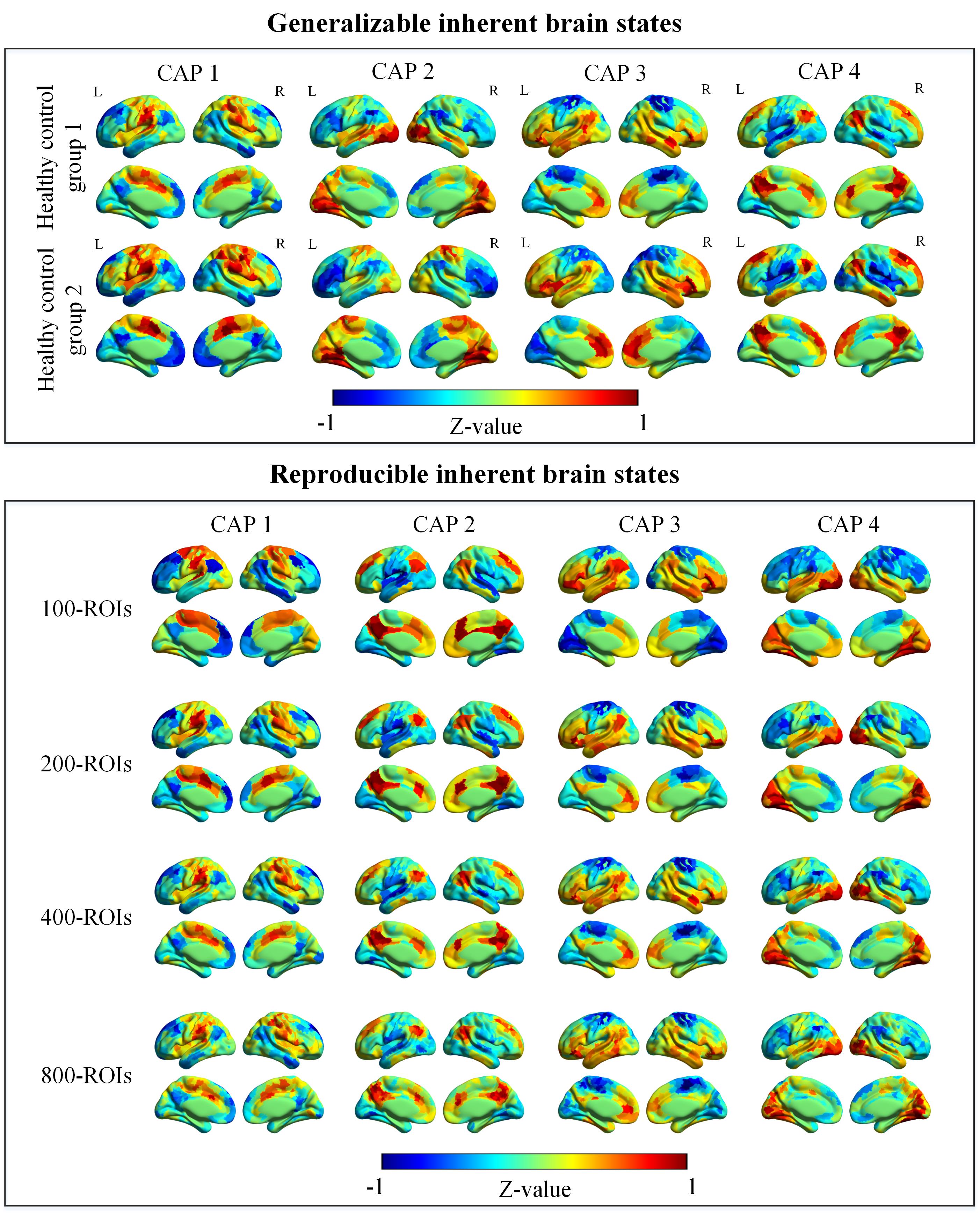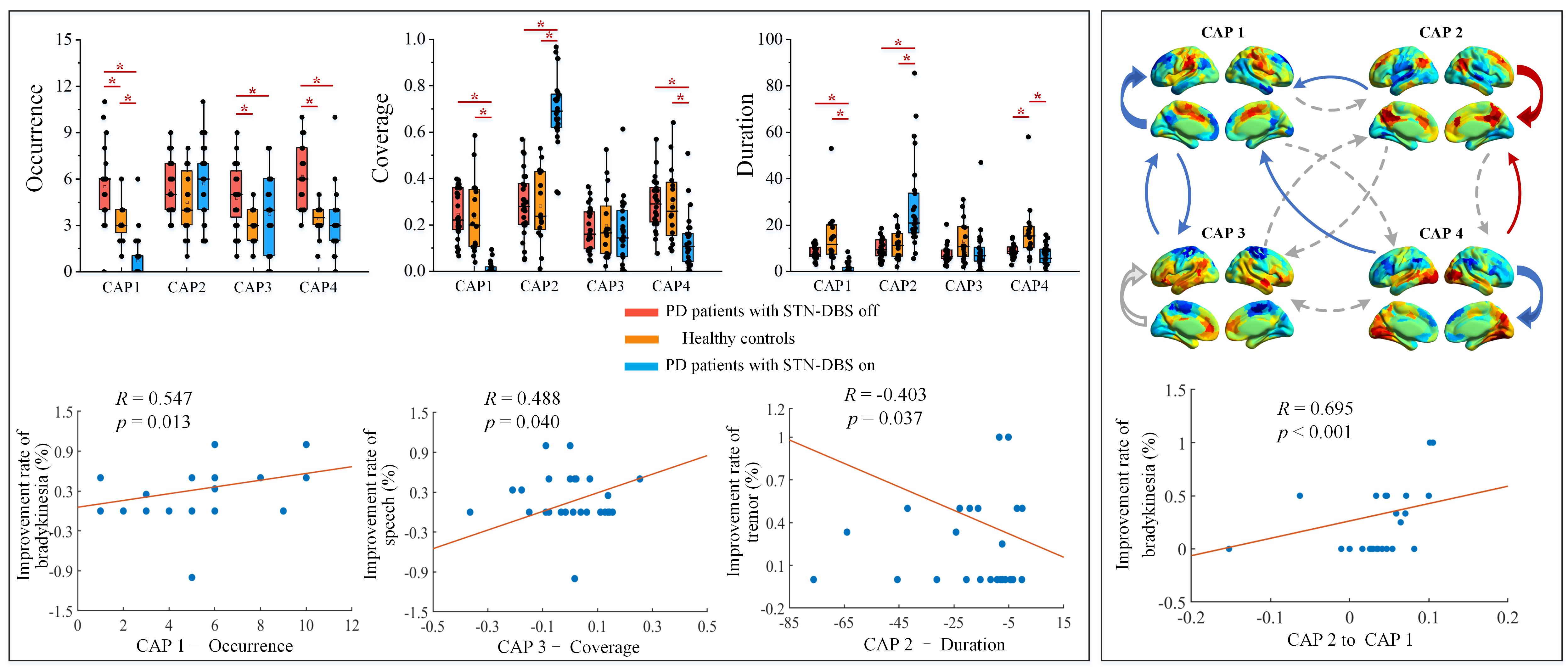Category: Parkinson's Disease: Neuroimaging
Objective: To elucidate the reliable inherent state of resting-state global brain network and explore the state modulation mechanism of subthalamic stimulation (STN-DBS) on Parkinson’s disease (PD).
Background: The reproducibility for state analysis is crucial in fMRI studies [1]. Internal brain states in PD exhibits complex dynamics related to aberrant motor function [2]. However, the reproducible and generalizable inherent brain states are still unclear, which severely limits the development of exploring the reliable modulation mechanism of STN-DBS.
Method: We acquired resting-state functional magnetic resonance imaging (fMRI) data from 27 PD patients with STN-DBS in both on and off states. 16 matched healthy subjects were included as a control group, and 30 healthy individuals with different collection parameters formed an independent cohort to verify the state generalization. To verify the reproducibility of the internal brain states, 7 functional brain networks were divided into cortical regions at different segmentation resolutions. Then, the dynamic functional connectivity sequence based on somatosensory-motion-cortex-seed served as the original activation map. Then, the reproducible algorithm was used to obtain the co-activation pattern (CAP) of these original activation maps, and they were fitting into the original activation maps to obtain the dynamic distribution sequence of internal brain states. The characteristic markers of inherent brain states dynamics are occurrence, coverage, duration, and their transition probability.
Results: Notably, our results confirm that the stable and consistent inherent brain states characterized by reproducible and generalizable functional connectivity CAPs [figure 1]. Moreover, STN-DBS improved motor symptoms by reshaping abnormal state distribution and key trajectory of state transition. Significantly, changes in the state distribution were associated with improvements in speech, bradykinesia and tremor symptoms induced by STN-DBS (p < 0.05) [figure 2], and the recovery of key state transition trajectory correlated with improvements in bradykinesia (p < 0.05) [figure 2].
Conclusion: This study has made a breakthrough in revealing reliable inherent brain states in resting-state brain networks, and revealed that STN-DBS can improve motor function by reshaping the inherent brain state features in PD.
References: [1] Botvinik-Nezer R., Holzmeister F., Camerer C.F., Dreber A., Huber J., Johannesson M., et al, 2020. Variability in the analysis of a single neuroimaging dataset by many teams. Nature 582 (7810), 84-88.
[2] Chunguang C., Shang L., Naying H., Zhitong Z., Jiang W., Zhen Z., et al, 2023. Subthalamic stimulation modulates motor network in Parkinson’s disease: recover, relieve and remodel. Brain awad004.
To cite this abstract in AMA style:
C. Chu, N. He, Z. Zeng, Y. Zhang, X. Wang, Z. Zhang, J. Wang, Y. Wang, Z. Jiang, Y. Lu, B. Sun, F. Yan, D. Li, C. Zhang, C. Liu. Subthalamic stimulation reshapes the reliable inherent brain state in Parkinson’s disease [abstract]. Mov Disord. 2023; 38 (suppl 1). https://www.mdsabstracts.org/abstract/subthalamic-stimulation-reshapes-the-reliable-inherent-brain-state-in-parkinsons-disease/. Accessed January 5, 2026.« Back to 2023 International Congress
MDS Abstracts - https://www.mdsabstracts.org/abstract/subthalamic-stimulation-reshapes-the-reliable-inherent-brain-state-in-parkinsons-disease/


